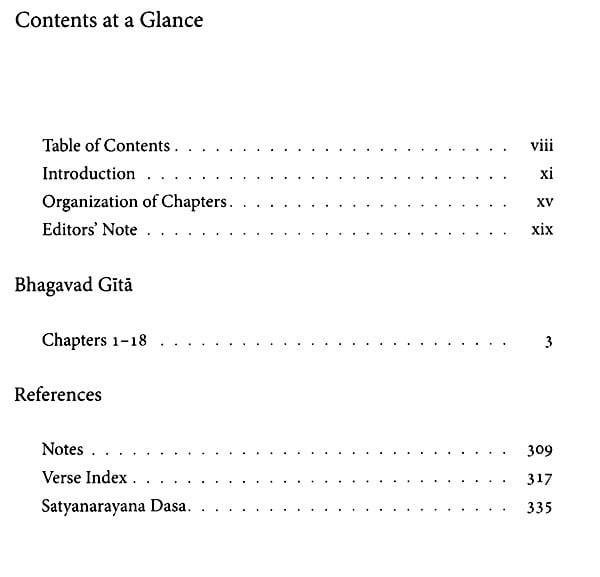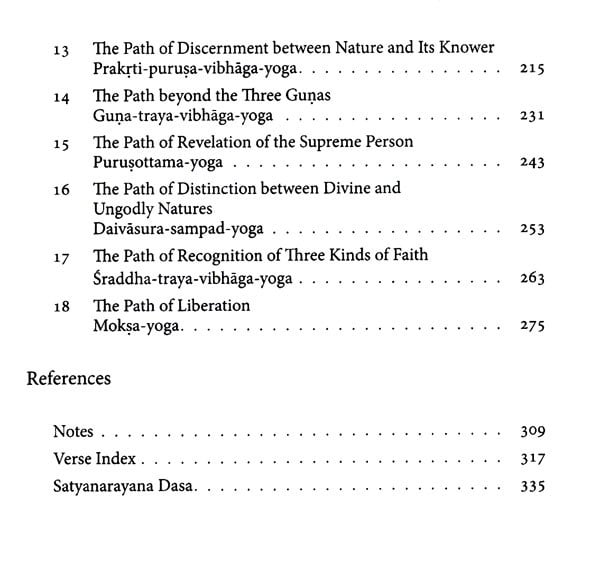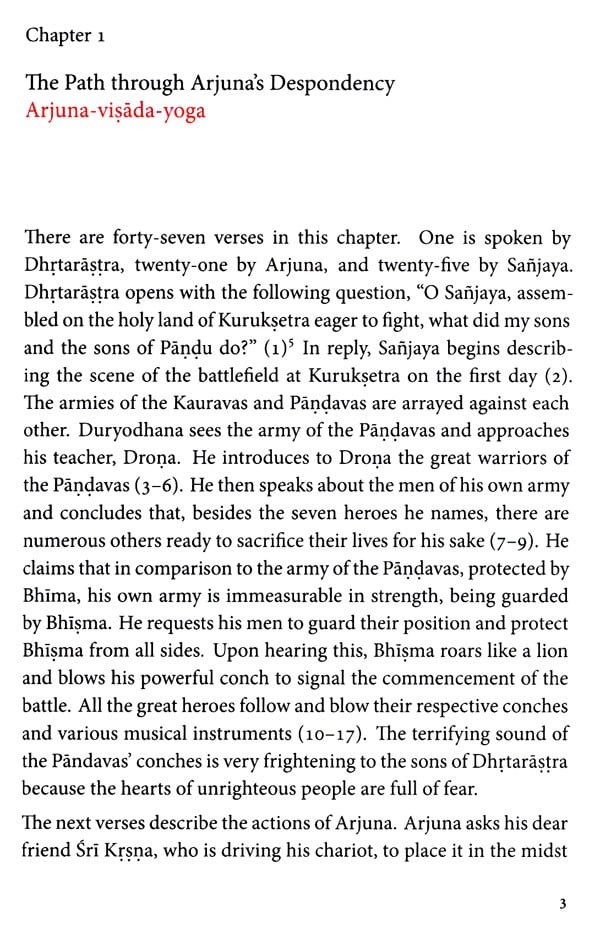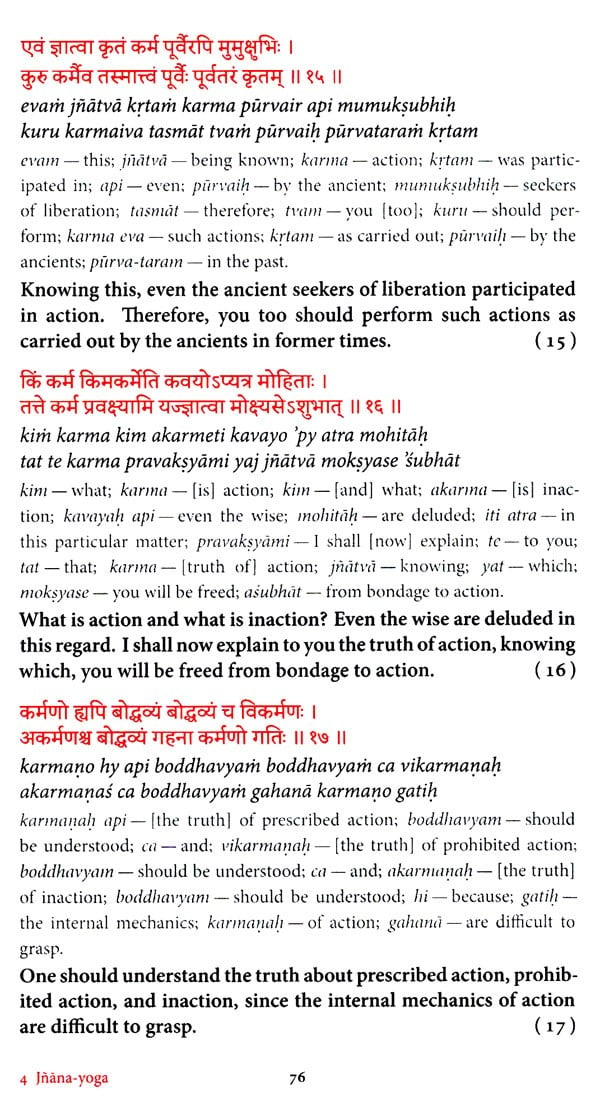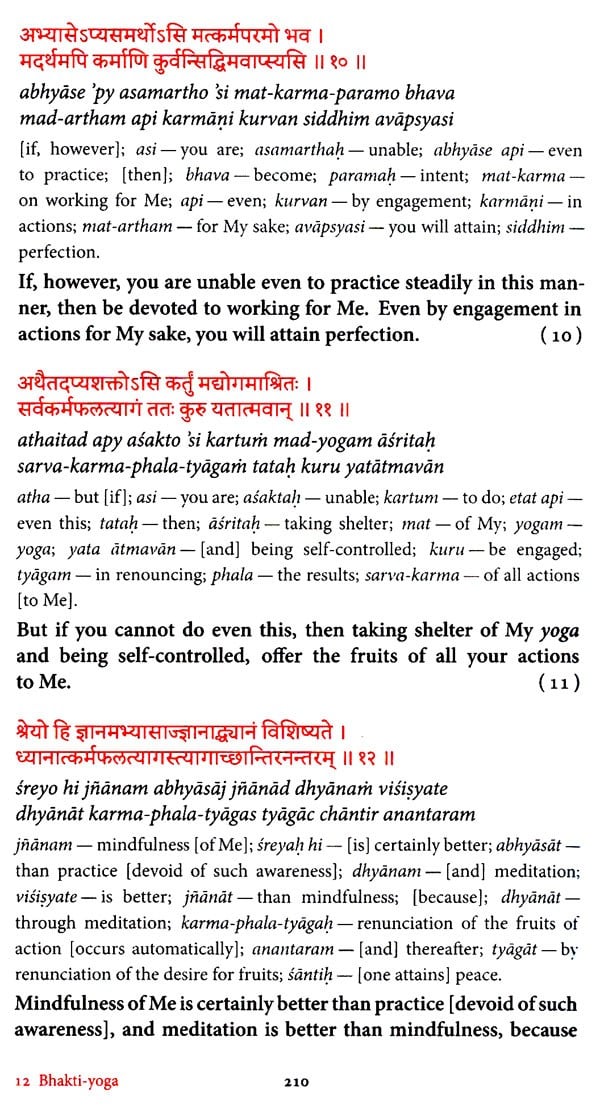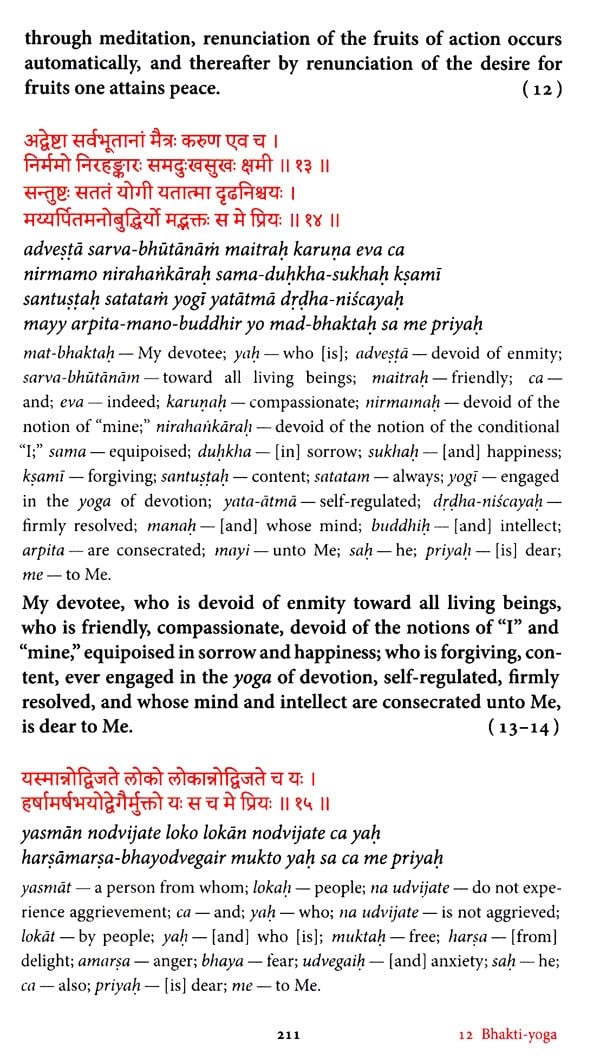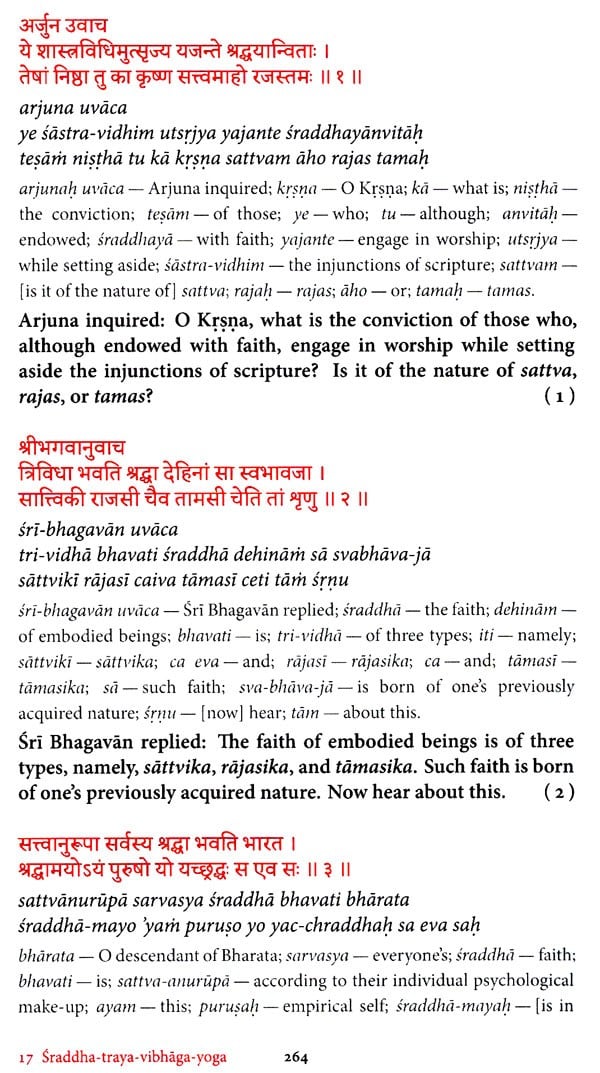
Slipcase Bhagavad Gita with Word-to-Word Meaning (With English Translation and Transliteration)
Book Specification
| Item Code: | NBZ784 |
| Author: | Satyanarayana Dasa |
| Publisher: | Jiva Institute, Vrindavan |
| Language: | Sanskrit Text With Transliteration and English Translation |
| Edition: | 2015 |
| ISBN: | 9788187153979 |
| Pages: | 358 |
| Cover: | HARDCOVER |
| Other Details | 7.00 X 4.20 inch |
| Weight | 340 gm |
Book Description
Born in 1954, Satyanarayana Dasa was drawn to the spiritual traditions of his home country India since his childhood. After receiving a postgraduate degree in 1978 from IIT Delhi, he then worked in the United States for four years. After this period, he returned to India to begin formal study of the orthodox systems of Indian philosophy, known as śad-darśana, under the direct guidance of his guru, Śrī Haridāsa Šāstrī Mahārāja, and Svāmī Śyāma Śarana Mahārāja. This education was pursued in the traditional manner for more than 25 years as he dedicated himself to the practice of bhakti-yoga. In 1991 he accepted the traditional Vaisnava order of renounced life, bābājī-veșa. His main focus has been on the works of Jīva Gosvāmī, particularly the Șat Sandarbhas, providing English translation and commentary. He also earned four śāstric degrees, and received both a law degree and a PhD in Sanskrit from Agra University. Satyanarayana Dasa is the director of the Jiva Institute of Vaishnava Studies in Vrindavan, India. In 2013 he was honored by the president of India, Pranab Mukherjee, for his extraordinary contribution in presenting Vedic culture and philosophy to students and audiences within India and internationally.
Bhagavad Gītā is an ancient text that was spoken by Bhagavān Śrī Krşņa to His friend Arjuna more than 5000 years ago. They both belonged to a society that adhered to the principles of varnāśramadharma, a system based on social duties prescribed by the Vedas? and Smrtis? Thus, some of the terminology used here may seem archaic and unfamiliar to the modern mind. The knowledge and instructions given, however, being of a universal nature, are highly relevant even today. Bhagavad Gītā is not an independent book. It forms a small part of Mahābhārata, the greatest epic of the world. The latter was written by sage Veda Vyāsa primarily for people who were considered ineligible to study the Vedas. To study the Vedas in former times, it was a requirement that one had to belong to the first three social classes (the brāhmanas, kșatriyas, and vaiśyas) of the varnāśrama society? Mahābhārata contains the same essential knowledge as found in the Vedas but in a simplified manner through the use of elaborate stories. It narrates the history of the famous dynasties of India. There were two major dynasties, namely, the Sun dynasty and the Moon dynasty. In Bhagavad Gītā, the focus is on two groups of cousins, the Kauravas and Pāņdavas, who appeared in the Moon dynasty. The Kauravas were the one hundred sons of Dhịtarāstra, who was blind since birth. Duryodhana was his eldest son. The Pāndavas were the five sons of Pāņdu, who died while they were still very young. Dhrtarāstra and Pāņdu were brothers. Pāņdu had been the king of Hastināpura, the capital city of the Kaurava kingdom, but after his untimely death, his blind brother assumed the throne.
Duryodhana did not want his cousin Yudhisthira, the eldest of the Pāņdava brothers and the legal heir, to inherit the kingdom. He tried to kill the Pāndavas in different ways, but they survived by the grace of Śrī Krşņa.
**Contents and Sample Pages**
